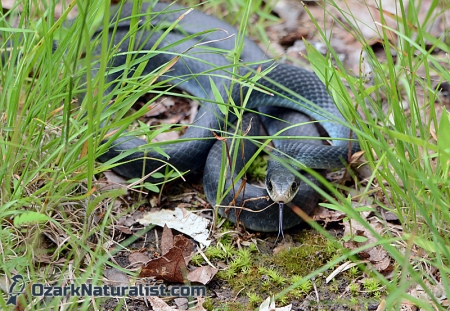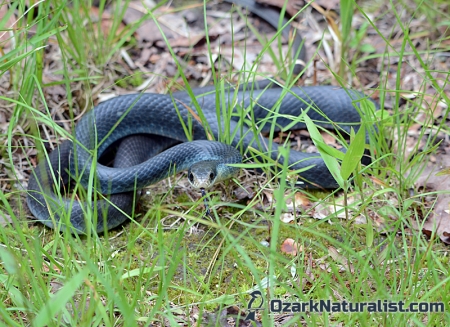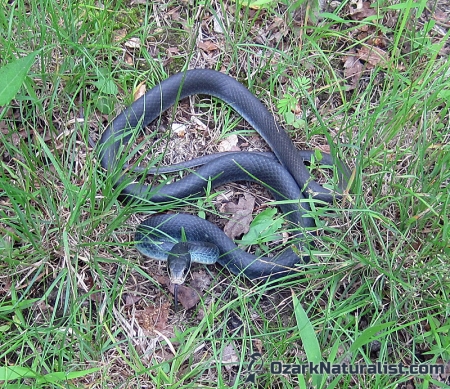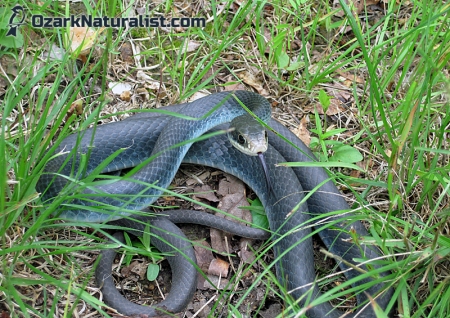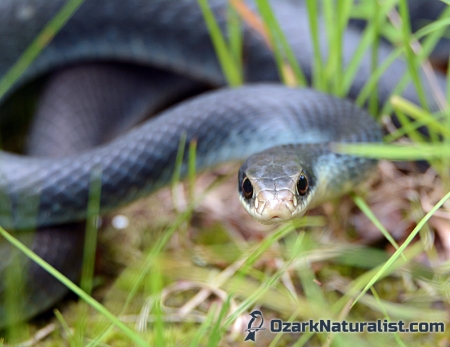A narrow fellow in the grass
Occasionally rides;
You may have met him, -did you not?
His notice sudden is.The grass divides as with a comb,
A spotted shaft is seen;
And then it closes at your feet
And opens further on.-Emily Dickinson, Snake
One day back in June, I had been lurking around my pond, photographing dragonflies. As I headed back towards the house, I stumbled upon this fine fellow, not noticing him immediately, but enjoying a burst of adrenaline when he did catch my attention.
Still armed with the 150-600mm lens, I started shooting. That lens won’t focus any closer than 10’ or so, which was limiting my options somewhat. I knew if I took my eyes from him long enough to get a different lens, he would make his escape and I’d never find him again. What to do, what to do?
I had my cell phone with me, so I called Dayna and asked her to bring my lens bag to me, without letting the dogs outside. Now more properly armed with a 100mm macro, I resumed shooting.
The snake was a Coluber constrictor, a Racer, and he was simply gorgeous. I loved how the dark gray, almost black, blended into the subtle blue and finally a creamy white underneath. There are eleven subspecies of C. constrictor, and each has a different common name, which is why I only referred to him as a Racer. Two of those subspecies, C. constrictor flaviventris (Eastern Yellow-bellied Racer) and C. constrictor priapus (Southern Black Racer.) Carter County is smack in the middle of the area where the two intergrade, so I’m not really sure which I was dealing with.
I’m going to guess C. constrictor flaviventris simply because this snake looked more like photos of that subspecies—photos of C. constrictor priapus were much darker, really black, and this guy didn’t match that.
And as far as the common name goes, when I was growing up, we called them all “Blue Racers,” neither knowing nor caring that there were multiple subspecies. I think that’s a more accurate name, but sadly it’s already been given to another of C. constrictor’s subspecies, C. constrictor foxii. That subspecies does not occur here, instead ranging through the upper Midwest from Ohio to Iowa and Wisconsin, though other sources don’t necessarily agree with that.
Racers can grow to more than four feet in length, though this individual wasn’t more than 20 inches or so. And despite the “constrictor” part of it’s Latin name, it does not kill by constriction, suffocating it’s prey. Most smaller prey is swallowed alive.
After making him endure long enough for me to change lenses and shoot fifty-plus photos, I decided I’d detained him long enough. I thanked him for his time, wished him well and left him to his own devices.
